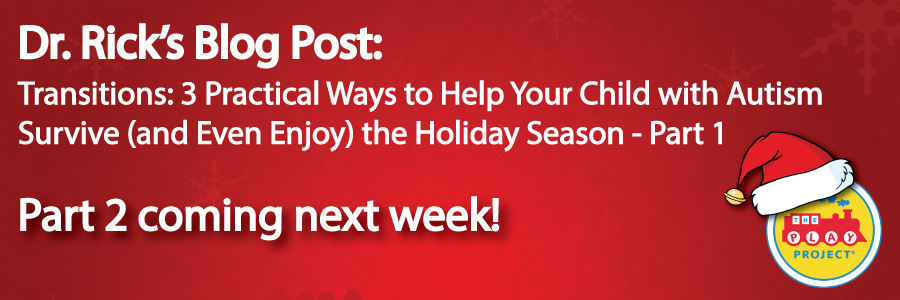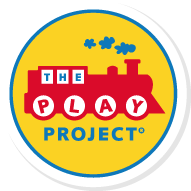
Written by Richard Solomon, MD
Part 1:
Children with autism are neurologically wired to “keep the world the same,” so the holiday season with all of its changes and transitions can be a challenge for the children and their families. When you realize what a child with autism must deal with during the holidays—change of schedules (no school!); change of daily routines; change of locations (going to Grandma’s for Thanksgiving or a friend’s for Christmas); loss of favorite activities; noisy parties with lots of new people; lots of excitement (new toys for Christmas!); and, worst of all, long car rides—it’s no wonder why they behave poorly and why so many parents of children with autism dread the holidays!
As a developmental and behavioral pediatrician who has “heard it all” over my 25 years in taking care of families who have a child with autism, I would like to offer 3 practical ideas that will help families cope with, survive, and even enjoy, the transitions associated with the holiday season.
#1. Plan for the worst. I know this sounds terrible to say, but if you want the holidays to be fun and wonderful and easy, don’t expect the holidays to be fun and wonderful and easy. You MUST plan for the worst. What if your child falls apart in the car, at a party, in the boring store, and/or in the noisy restaurant? Do you have a specific plan for each likely scenario? Here are some examples of planning for the worst to make the holidays the best.
Going to the mall: Wife to husband, “I’ve got the iPad for Jacob to keep him from getting bored. And let’s plan on going to Red Robin (his favorite) before it gets too busy and noisy. But if he loses it in the mall or the restaurant, honey, let’s plan on getting him out to the car for a ‘car time out’ quickly. Would you take him to the car and I’ll finish up shopping or eating with Charlie (Jacob’s brother)?” Of course, a good husband agrees with the plan. Often outings are a two-person job. So plan on it.
Going to a relative’s house: Wife to husband: “Would you call up your brother and ask him to set up a quiet room in their home where Jacob can get away from the party and watch Cars?” Husband to wife: “That’s a great idea.” Have a safe space at every place! Plan on it.
For those long vacation car rides: I recommend in-car movies and liberal use of iPads, iPhones, headphones, books, favorite snacks, favorite toys to hold—whatever will keep the kids quiet in the car. Keep the micro environment familiar and rewarding (See #2). But plan for disaster. For instance: When Jacob and Charlie start fighting in the back seat (“Jacob won’t stop humming!”). You try being nice; you try threatening. Nothing works. And Jacob starts kicking the back of the driver’s seat, pulling your hair, and pounding the window. Do you have a plan? Here’s my plan: Tell them in a loud, clear, and not-so-nice voice: “I can’t drive when you are acting like this! We are going to have a CAR TIME OUT!” Then, safely, but as soon as you can, pull over. Get out the fattest book you own (I recommend Tolstoy’s War and Peace) and read for a full 15 minutes. Make sure it’s very boring for the children. Then use CAR TIME OUT as a threat the next time they start acting up: “Do you boys want a CAR TIME OUT?!” No, mom. Anything but a CAR TIME OUT. “Then you better behave.” Expect the car ride to take at least a half an hour longer than usual. Plan on it.
Stay tuned for next week: #2. Keep the micro environment familiar and rewarding, and #3. Mirror back the child’s feelings
For more ideas on ways to make transitions easier, check out The PLAY Project’s mini-course on this topic (link) and Dr. Rick’s book called Autism: The Potential Within where you will find the chapter called “Dr. Rick’s 20 Transition Tricks.”
